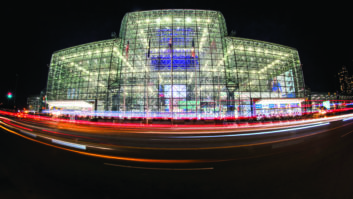Jeff Detweiler

Click on the Image to Enlarge
Jeff Detweiler is executive director of broadcast engineering for DTS Inc., new owner of HD Radio. At the upcoming spring NAB Show, he�ll be part of a Sunday morning session discussing audio processing configuration and its impact on HD Radio blending. Radio magazine caught up with him to ask about it.
Radio: It seems safe to say that engineers are more aware now than they were a few years ago of the general importance of station time and level alignment. What new or specific perspective does this session bring?
Detweiler: While I agree that awareness of the issues has increased among broadcast engineers, only a handful are truly beginning to understand the complexity and interaction of the broadcast sub-systems to misalignment and drift. The white paper and presentation will focus on what configurations are viewed as optimal, topologies which are problematic and how to take corrective action for stable time and level alignment operation.
Radio: We�re told that the session reflects research by DTS, Inovonics and iHeartMedia. Tell us about that project.
Detweiler: This project was part of the research conducted on the time and level alignment measurement feature of our broadcast monitoring network. That research information was fed back into the automated time alignment system development for Belar, Inovonics and DaySequerra. These products are now in the market and available to maintain station time and level alignment.
Radio: Why would stations that are correctly time aligned still not blend correctly?
Detweiler: If your definition of �aligned� includes stable operation (not variable over time) and properly matched audio levels, it would not be audible. However, stations that have time alignment drift or use dissimilar audio processing, may be aligned at one point in time and not at another. They may also be at variance in the audio level match between analog and digital resulting in a significant level disruption at the blend transition.
Radio: We know you don�t want to spill the entire session ahead of time, but are there one or two best practices that you can share for engineers now?
� Broadcast Monitor tracking time and level alignment on a well-disciplined station

Detweiler: First: Use of common processing (dual output) for analog and digital program streams. Second: Use of a GPS disciplined 44.1 kHz Word-Clock to lock your facilities AES digital audio streams. This will eliminate drift between the analog and digital program paths.
Radio: Anything else we should know about what you�ve learned on this topic?
Detweiler: Much more to share, but too detailed to convey in a single paragraph. Please join us for the session.
Radio: Many readers know you from your work at iBiquity. How has your role evolved since the acquisition of DTS?
Detweiler: I would imagine nearly everyone�s role in business is evolving these days. My position at DTS is no exception. One of my newest responsibilities centers on rollout in Canada and positioning HD Radio technology as the North American Digital Radio Standard. However, I remain equally active as before in broadcast product development, simplifying system configuration and regulatory support.
Session Info:
Audio Processing Configuration and Its Impact on HD Radio Blending












